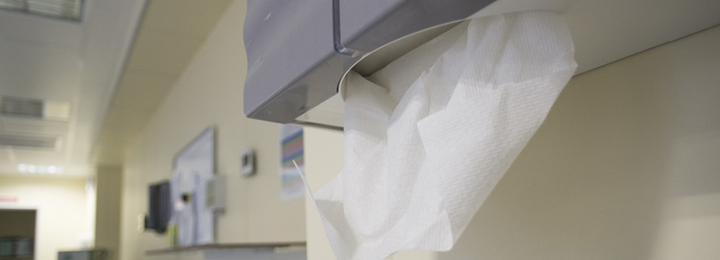In June, hundreds of participants in the wipes market convened for the INDA (Association of the Nonwoven Fabrics Industry) World of Wipes annual meeting in Atlanta, Georgia. There were many presentations from speakers representing industry associations, chemical suppliers, wipes manufacturers, and raw material suppliers. A common theme that was raised pertains to increasing efforts to limit single-use plastic and the plastic-free movement. Many U.S. states and countries, especially in Europe, are phasing out single-use plastics, and by 2021 in Europe, wipes packages will need to contain labeling that shows they “contain plastics” if they do. Since wipes contain plastic components and packaging, the industry needs to keep a watchful eye on this trend.
In response to this, several presenters mentioned new trends such as using natural fibers like cotton and even hemp to make wipes, increased demand for label transparency for wipes to list substrates, and labels that mention use of recycled materials and fibers. Others mentioned the need for biodegradable wipes from renewable resources such as cotton, viscose, and pulp.
When it comes to sustainability, several speakers at WOW discussed how a circular economy – one that uses resources (preferably renewable) to make goods that are recycled after use to create new content for other products – would be good for our environment. But many consumers say that although they are in favor of using products from companies that operate in a sustainable way, in reality, a bulk of them are not willing to pay more for sustainable products. Other topics such as wipes flushability and degradability were also discussed during WOW presentations, including some manufacturers creating initiatives with local municipalities for proper disposal of non-wovens including wipes.
Kline is in the process of gathering market research for the second edition of its Industrial and Institutional Cleaning Wipes study, which will be published in September. The source for this report includes more than 500 commercial end-use decision makers as well as 30 to 40 in-depth interviews with manufacturers, distributors, raw material suppliers, and others knowledgeable on the commercial wipes market. End users include those in healthcare, foodservice, building service contractors, hospitality, education, fitness facilities, industrial facilities, and retailers. Both wet wipes and dry wipers are included in the scope of this report, as are insights on usage, critical buying factors, spending, satisfaction, and where wipes are purchased. To learn more, contact us.

